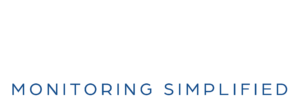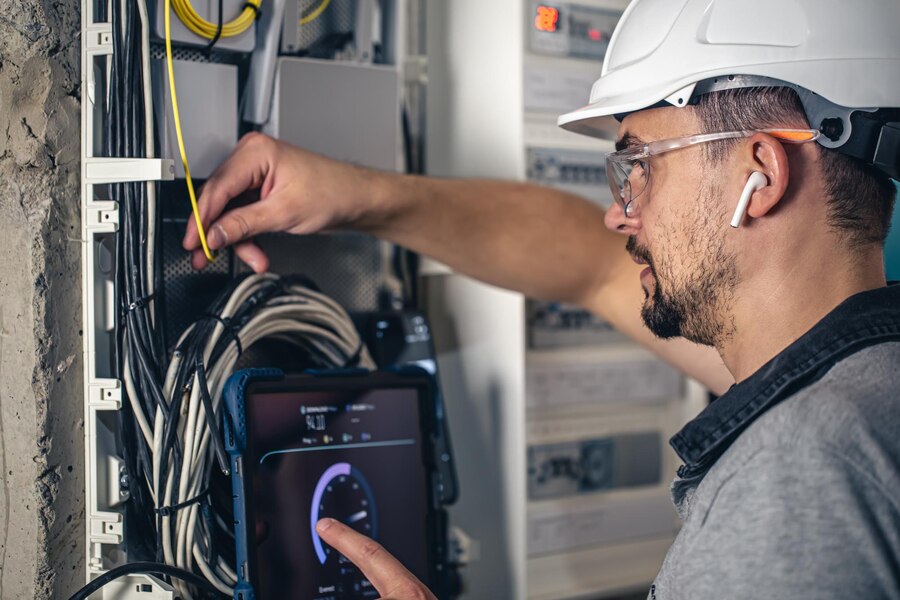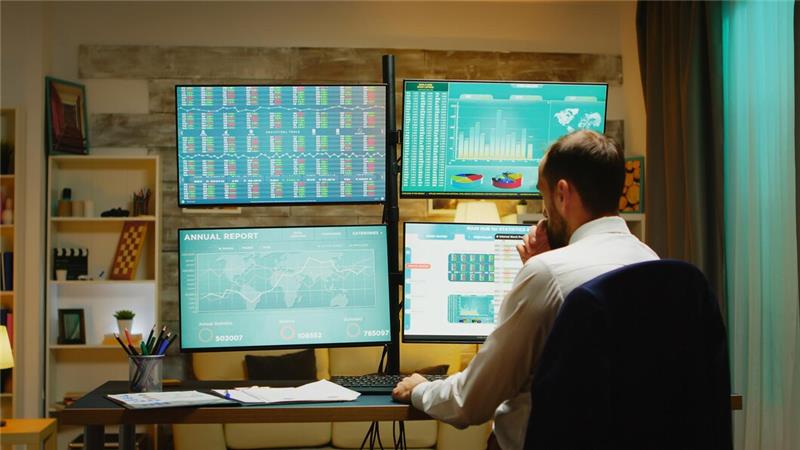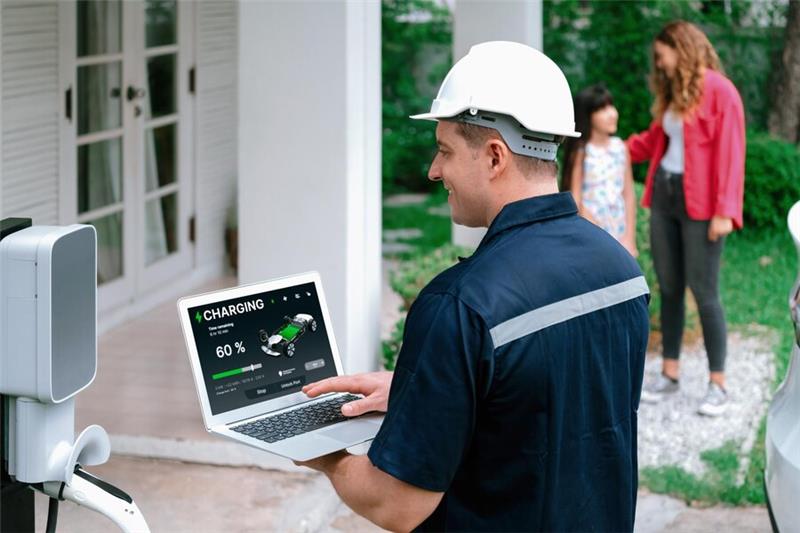Introduction
In the intricate web of power systems, cables serve as the lifelines, transmitting energy across vast distances. Their health and efficiency are paramount, not just for uninterrupted power supply but also for the safety of the infrastructure. Cable testing techniques have, over the years, emerged as the guardians of these lifelines, ensuring their optimal performance. With the advent of electrical asset monitoring software, the realm of cable testing has witnessed a paradigm shift, offering more precision, real-time insights, and predictive analytics. This article delves into the journey of cable testing techniques, their modern-day applications, and the transformative role of monitoring software in shaping the future of power systems.
Historical Evolution of Cable Testing Techniques
The intricate world of power systems has always been dependent on the health and efficiency of its cables. As the arteries of our electrical infrastructure, ensuring their optimal performance has been a priority since the inception of electrical engineering. The methods and techniques to achieve this have seen a transformative journey over the years.
1. The Dawn of Cable Testing
In the initial days of electrical engineering, cable testing was rudimentary. Engineers relied on manual inspections, visual checks, and basic electrical tests to gauge the health of cables. These methods, although fundamental, laid the groundwork for the sophisticated techniques of today.
2. The Era of Instrumentation
As technology progressed, the transition phase saw the introduction of specialized instruments designed to detect flaws and measure electrical properties of cables. These instruments offered a more detailed insight into cable health, marking a significant step forward in cable testing techniques.
3. The Precursors to Modern Techniques
Before the digital revolution, several advanced methods emerged. These techniques, which included time-domain reflectometry and very low frequency testing, set the stage for the contemporary methods used today. They offered a deeper understanding of cable health, paving the way for the integration of software solutions.
4. Integration with Electrical Asset Monitoring Software
The game-changer in the realm of cable testing was the integration with electrical asset monitoring software. This merger allowed for real-time data collection, predictive analytics, and a holistic view of cable health. Engineers could now not only detect but also predict potential failures, ensuring timely interventions and drastically reducing downtimes.
The evolution of cable testing techniques underscores the industry’s commitment to safety and efficiency. As we move forward, the synergy between traditional testing methods and modern software solutions promises to elevate the standards of electrical asset monitoring, ensuring a safer and more efficient power infrastructure for all.
Safety Implications of Cable Testing
In the realm of electrical engineering, the importance of cables is paramount. They serve as the lifelines of our power systems, transmitting energy across vast distances. Ensuring their health and efficiency is crucial, and modern cable testing techniques have risen to the challenge, offering precision, accuracy, and comprehensive insights.
1. Time-Domain Reflectometry (TDR)
TDR is a widely used technique that involves sending a pulse through a cable and analyzing the reflected signal. Any impedance changes, indicative of faults or damages, can be identified. The time taken for the reflection helps in pinpointing the exact location of the fault, making TDR a valuable tool for diagnostics.
2. Very Low Frequency (VLF) Testing
VLF testing is preferred for medium voltage cables. It subjects the cable to a low-frequency AC voltage, which is more effective and less damaging than a 60Hz AC test. This method is especially useful in detecting ‘water trees’, microscopic faults that can lead to cable failure.
3. Partial Discharge (PD) Measurement
PD measurement is crucial for detecting insulation defects. These discharges, which occur due to insulation breakdown, can lead to catastrophic failures if not addressed. Modern PD measurement tools offer real-time monitoring, helping engineers take preventive actions.
4. Integration with Asset Monitoring Software
Modern cable testing techniques are seamlessly integrated with electrical asset monitoring software. This integration allows for continuous monitoring, data analytics, and predictive maintenance. Engineers can access a wealth of data, from cable health metrics to historical performance trends, all in real-time.
The advancements in cable testing techniques underscore the industry’s commitment to ensuring safety and efficiency in power systems. With the fusion of traditional methods and cutting-edge software solutions, the future of cable health monitoring looks promising, ensuring robust and resilient power infrastructures.
Challenges in Cable Testing
Cable testing, while essential for ensuring the health and efficiency of electrical assets, also plays a pivotal role in safeguarding both equipment and personnel. The safety implications of cable testing are manifold, and understanding them is crucial for any entity involved in power systems.
1. Prevention of Catastrophic Failures
Regular cable testing can identify potential weak points or defects in the insulation and conductive parts. By detecting these issues early, companies can prevent catastrophic failures, which could lead to fires, equipment damage, or even personnel injuries.
2. Ensuring Compliance with Safety Standards
Many regulatory bodies have set forth standards and guidelines for cable health and safety. Regular testing ensures that cables remain compliant with these standards, thereby reducing legal liabilities and ensuring a safe operating environment.
3. Reducing Electrocution Risks
Faulty cables can pose electrocution risks. Through comprehensive cable testing, any breaches in insulation or other defects that might expose conductive parts can be identified and rectified, ensuring the safety of maintenance personnel and the general public.
4. Enhancing System Reliability
A well-tested cable system is a reliable one. By ensuring that cables are free from defects and are operating optimally, companies can reduce unplanned downtimes, thereby ensuring consistent power supply and minimizing disruptions.
Incorporating regular cable testing into maintenance schedules is not just a matter of efficiency; it’s a matter of safety. With the integration of modern cable testing techniques and electrical asset monitoring software, companies can ensure that their power systems are not only efficient but also adhere to the highest safety standards.
The Future of Cable Testing
Cable testing, while indispensable for ensuring the reliability and safety of electrical systems, is not devoid of challenges. As technology advances and power systems become more intricate, the complexities associated with cable testing also evolve. Understanding these challenges is crucial for professionals in the electrical asset monitoring software industry to devise effective testing strategies.
1. Integration with Legacy Systems
Many older power systems were not designed with modern cable testing techniques in mind. Integrating advanced testing tools with these legacy systems can be cumbersome, often requiring custom solutions or even hardware modifications.
2. Interpretation of Test Results
With the plethora of data generated from advanced cable testing techniques, interpreting the results accurately requires expertise. Misinterpretation can lead to incorrect diagnoses, potentially overlooking critical issues or leading to unnecessary interventions.
3. Environmental Factors
External factors like temperature, humidity, and soil conditions can influence cable testing results. Professionals need to account for these variables to ensure accurate readings, which can sometimes be challenging, especially in fluctuating conditions.
4. Cost Implications
Advanced cable testing techniques, while offering precision, can be expensive. Balancing the need for comprehensive testing with budgetary constraints is a challenge many companies face, especially smaller entities with limited resources.
Cable testing is pivotal for the health and efficiency of power systems, it comes with its set of challenges. By understanding these challenges and leveraging electrical asset monitoring software, professionals can navigate these complexities, ensuring both the safety and efficiency of their electrical assets.
Conclusion
The realm of cable testing has come a long way, evolving from basic methods to sophisticated techniques powered by advanced software solutions. As power systems continue to grow in complexity, the role of cable testing becomes even more crucial. With the integration of electrical asset monitoring software, the future holds immense promise for even more accurate, real-time, and predictive cable health assessments. For companies, embracing these advancements is not just a matter of efficiency but also of safety and long-term sustainability. As we look ahead, the synergy between cable testing techniques and monitoring software will undoubtedly be at the forefront of revolutionizing power system operations.




